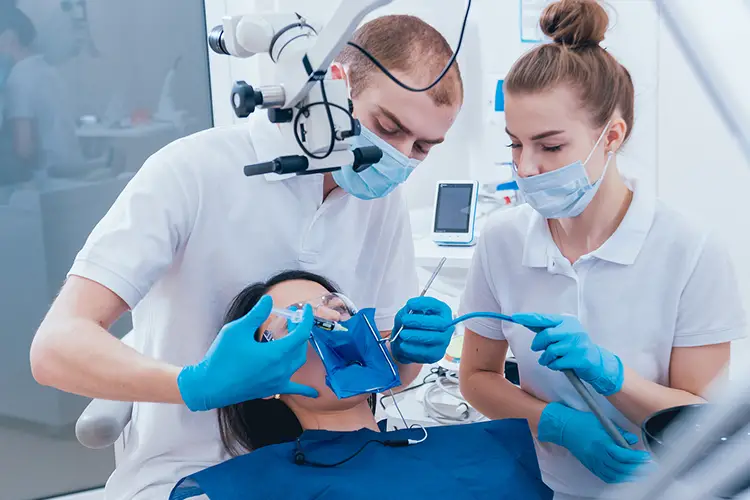A root canal is a common dental procedure that treats a damaged or infected tooth. While the idea of a root canal can be intimidating, it’s a well-established treatment to save a tooth and relieve pain. By understanding the steps involved, patients can feel more at ease during the process.
Diagnosis and Preparation
The procedure starts with a complete dental examination. Your dentist or endodontist will take X-rays to assess the damage and identify the root canal structure. Once the extent of the infection is clear, the dentist will numb the area with a local anesthetic. A dental dam will be placed around the tooth to keep it dry and free from saliva, providing a clean working area.
Once the area is numb, the dentist creates a small opening in the tooth’s crown. Through this opening, the dentist removes the infected or damaged pulp. The pulp includes nerves and tissue that need to be removed to eliminate infection.
Cleaning and Shaping the Canals
After the pulp is removed, the dentist thoroughly cleans the root canals to eliminate any remaining bacteria and tissue. This cleaning process helps prevent future infections and confirms that the tooth’s internal structure is completely disinfected. Once cleaned, the dentist shapes the canals to allow for precise and effective filling. Proper shaping also helps create a secure space for sealing the tooth against further contamination.
Shaping the canals is a critical part of the root canal process that supports successful healing and long-term function. Without careful shaping, bacteria could remain or re-enter, potentially causing reinfection and pain. This meticulous step contributes greatly to preserving the natural tooth and maintaining overall oral health.
Filling the Root Canal and Restoring the Tooth
Once the dentist has cleaned and shaped the canals, they proceed to fill them with a biocompatible material. Gutta-percha, a rubber-like substance, is typically used to fill the space inside the tooth. The filling is then sealed with adhesive cement, which helps prevent any future infections from developing.
After the filling, the dentist places a temporary filling to seal the tooth and protect it. If needed, a permanent crown may be added for additional durability and protection. Crowns offer significant strength, particularly for molars that endure substantial chewing pressure. In addition to restoring the tooth’s function, a crown will improve its overall appearance and longevity.
Schedule Your Consultation Now
A root canal is a highly effective and routine procedure that can save a damaged tooth from extraction.It provides relief from the pain caused by infection and helps maintain the tooth’s long-term functionality. Thanks to modern dental techniques, the procedure is typically no more uncomfortable than getting a filling.
Preserving your teeth is key to maintaining your bite and overall oral health. It helps avoid more complicated procedures that may arise from losing a tooth, such as implants or bridges. By saving the tooth, you protect surrounding teeth from shifting and other potential issues. A healthy, preserved tooth supports your ability to chew and speak without discomfort or difficulty.








Leave a Reply